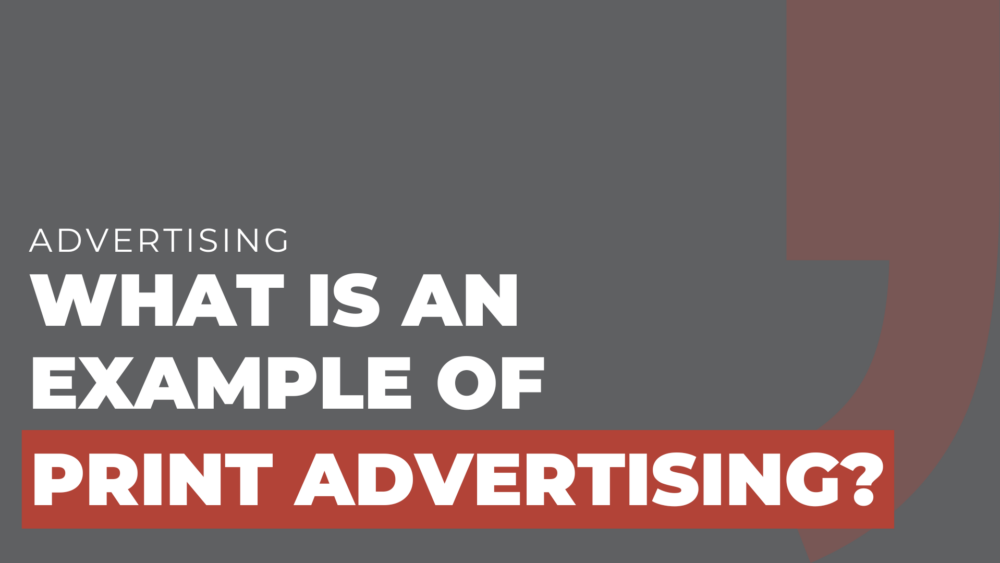Print ads have the power to capture attention, engage readers, and leave a lasting impact.
What is an example of print advertising?
My favorite example is the iconic “Got Milk?” campaign.
These ads featured celebrities with milk mustaches, showcasing how important it is to have milk in your diet.
The simple yet effective design and messaging of these print ads made them memorable and instantly recognizable.
What are the Major Types of Printed Advertising?
Print advertising encompasses a wide range of formats, each with its unique advantages.
Here are the major types of printed advertising:
- Newspaper Ads: These ads appear in newspapers and reach a broad audience. They are effective for promoting local businesses, announcing sales, or showcasing products and services.
- Magazine Ads: Magazine ads allow for more targeted marketing as they cater to specific audiences. Whether it’s fashion, lifestyle, or niche publications, these ads provide an opportunity to target specific demographics.
- Brochures and Flyers: Brochures and flyers are versatile and cost-effective print materials. They can be distributed at events, trade shows, or sent through direct mail. With eye-catching designs and compelling content, they can effectively convey information about a product or service.
- Billboards and Posters: Billboards and posters are larger-than-life advertisements that capture attention in high-traffic areas. They are ideal for brand awareness campaigns or promoting upcoming events.
- Direct Mail: Direct mail involves sending promotional material directly to consumers’ mailboxes. This method allows for personalized messaging and can generate a higher response rate than other forms of advertising.
What Makes a Good Print Advertisement?
For a print advertisement to be effective, it needs to stand out from the clutter and resonate with the target audience.
Here are a few key elements that make a good print advertisement:
- Compelling Visuals: Engaging imagery or illustrations can grab attention and evoke emotions. Visuals should be relevant to the message and help tell the story of the ad.
- Clear and Concise Message: A good print ad delivers its message quickly and effectively. The headline and copy should be concise, engaging, and easy to understand.
- Strong Call-to-Action: Every print advertisement should have a clear call-to-action (CTA) that directs readers on what to do next. Whether it’s visiting a website, making a purchase, or subscribing to a newsletter, the CTA should be compelling and easy to follow.
- Consistent Branding: Branding plays a crucial role in creating brand recognition and trust. A good print ad aligns with the brand’s identity, using consistent colors, fonts, and logo placement.
Famous Print Ads
Over the years, numerous print ads have captivated audiences and become iconic in the world of advertising.
Here are a few examples:
- Apple – “Think Different”: This iconic campaign featured black and white portraits of influential figures such as Albert Einstein and Mahatma Gandhi. The simple yet powerful visuals and the tagline “Think Different” conveyed Apple’s innovative and rebellious spirit.
- Nike – “Just Do It”: Nike’s “Just Do It” campaign is known for its motivational messaging and inspiring visuals. The print ads feature athletes pushing their limits, encouraging consumers to embrace their inner champions.
- Volkswagen – “Think Small”: Volkswagen’s “Think Small” campaign challenged the industry norms by promoting the compact size of their Beetle model. The minimalist design and clever headlines made these ads memorable and helped redefine automotive advertising.
At the End of the Day
Print advertising continues to be a valuable marketing tool.
By understanding the major types of printed advertising, knowing what makes a good print advertisement, and drawing inspiration from famous examples, businesses can create impactful campaigns that resonate with their target audience.


Comments are closed.